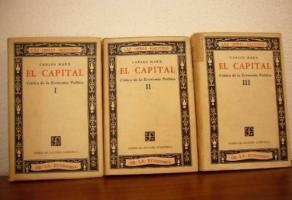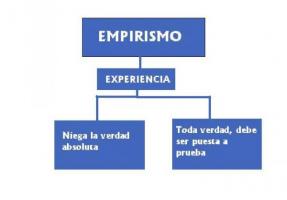Independence of Latin American countries

Until the 19th century, most of America was under Spanish hands, forming one of the great empires in history. But the emergence of liberal ideas changed this forever. In a few decades, the various American viceroyalties began a revolution against the spanish, achieving independence with effort, thus forming many of the current American states. To learn about this process, in this lesson from a TEACHER we are going to offer you a summary of the independence of Latin American countries.
Index
- Causes of the independence of Latin America
- The self-government boards
- The conflict for the independence of Latin America
Causes of the independence of Latin America.
To understand the independence processthat took place from 1808 to 1833, we must first speak of the causes, these being both internal as external, and being vital for the knowledge of why in a short period of time there were so many revolutions.
Internal causes
First of all, we must talk about internal causes, that is, those that arose within Latin American countries. Most of these internal causes were due to
corruption of politicians, due in large part to the fact that the high positions of the viceroyalties came from the Peninsula, there being few natural politicians from America.Other important internal causes are as follows:
- Belief in popular sovereignty, when the king is missing, power falls to the people
- The abdications of the Spanish monarchs against Napoleon, with the loss of the Spanish kings, forms of self-government were sought
- The Jesuits, very influential people in America, whose ideas clashed with the Spanish government in the American territories
- Dissemination of liberal ideas and revolutionaries born in Europe a few years ago
- The economic problems that plagued the colonies due to the Bourbon reforms
External causes of the independence of Latin America
On the other hand there were external causes, much less numerous than internal ones, but just as important. One of the main external causes were revolutions, both that of USA as the french, serving as a model for what the American colonies were looking for.
The relationship of many American revolutionary leaders to American politics and the enlightened thinkers British was also an important external cause. But the main external cause was all the events that happened in the Iberian Peninsula, both the Napoleon's invasion, such as the creation of Juntas that would influence the formation of the Juntas Hispanic Americans.

Image: Slideshare
The Self-government Boards.
The American boards They sought to preserve the rights of King Ferdinand VII, but looking for separation with any Spanish government. From 1808 to 1814 the different viceroyalties suffered local movements for the creation of the Juntas, being very different from each other.
- In the Viceroyalty of the Río de la Plata the first junta was created in September 1808, in Montevideo, although they maintained the sovereignty of the viceroy. After several failed attempts at revolution, in 1810 the May Revolution took place, which led to the start of the Argentine War of Independence.
- In the Viceroyalty of New Granada the first meeting took place in August 1809, taking place in Quito. Simón Bolívar, a Venezuelan leader, had a great influence in this part of America who, through a series of political and military movements sought independence from the Viceroyalty of New Granada and the Captaincy General of Venezuela.
- On the other hand in the Captaincy General of Chile the first meeting was created in September 1810, taking place in Santiago de Chile. During the first years there was a great dispute between the two sides, between those who supported the Spanish government and those who sought independence.
- Finally we must talk about Viceroyalty of New Spain, where the Meeting of Mexico was held in August 1808, being the first of the Latin American meetings. It could be said that it was in Mexico where the Latin American revolutionary movement began.
The conflict for the independence of Latin America.
Continuing with this summary of the independence of the Latin American countries, we will now talk about the second phase that goes from 1814 to 1833, being the period in which the Latin American countries became independent from Spain.
In 1814 the majority of Viceroyalties had self-government boards, having started a process of independence from the Spanish government. In Spain, the Spanish War of IndependenceIt was over, and they were afraid of not being able to reverse the situation in the colonies, causing a Spanish reaction.
The Spanish troops were called realistic and from 1814 to 1816 they began an attempt to reverse the situation. The royalist repression was rapid, causing great casualties in the revolution, and the flight of great revolutionary leaders, such as that of Simon Bolivar.
- In 1816, the royalists had won in New Granada, Peru and Chile, being the current Argentina the only one that seemed to emerge victorious from the battle, proclaiming the independence of the United Provinces of the Río de la Plata in July 1816.
- In the following years the conflict turned around again, being the Spanish American colonies the ones that began to achieve great victories against the royalists. Little by little other states were proclaiming independence. In Chile, with the arrival of General O'Higgins, the royalists could be defeated, proclaiming the independence from Chile in April 1818.
- The Viceroyalty of New Granada and the Captaincy General of Venezuela, commanded by Simón Bolívar, achieved great victories and proclaimed their independence under the name of Great Colombia.
- The case of Peru was more complicated, since it had always been a place of great Spanish presence, but the arrival of José de San Martín caused the independence of Peru to be proclaimed in July 1821. While San Martín carried out the revolution in Peru, Bolívar did the same in Bolivia, proclaiming the country's independence in August 1825.
- On the other hand, the arrival of Agustín de Iturbide balanced the balance in Mexico, proclaiming its independence in August 1821, becoming the First Mexican Empire.
With all this, the independence of the Latin American states from Spain ended, forming numerous new states based on liberal ideas. Although this structure would not last long, since several of the states would undergo new revolutions in the following years, forming new states such as Venezuela, born from Gran Colombia, or Uruguay, born from the United Provinces of Rio de Silver.

If you want to read more articles similar to Independence of Latin American countries: summary, we recommend that you enter our category of Story.



